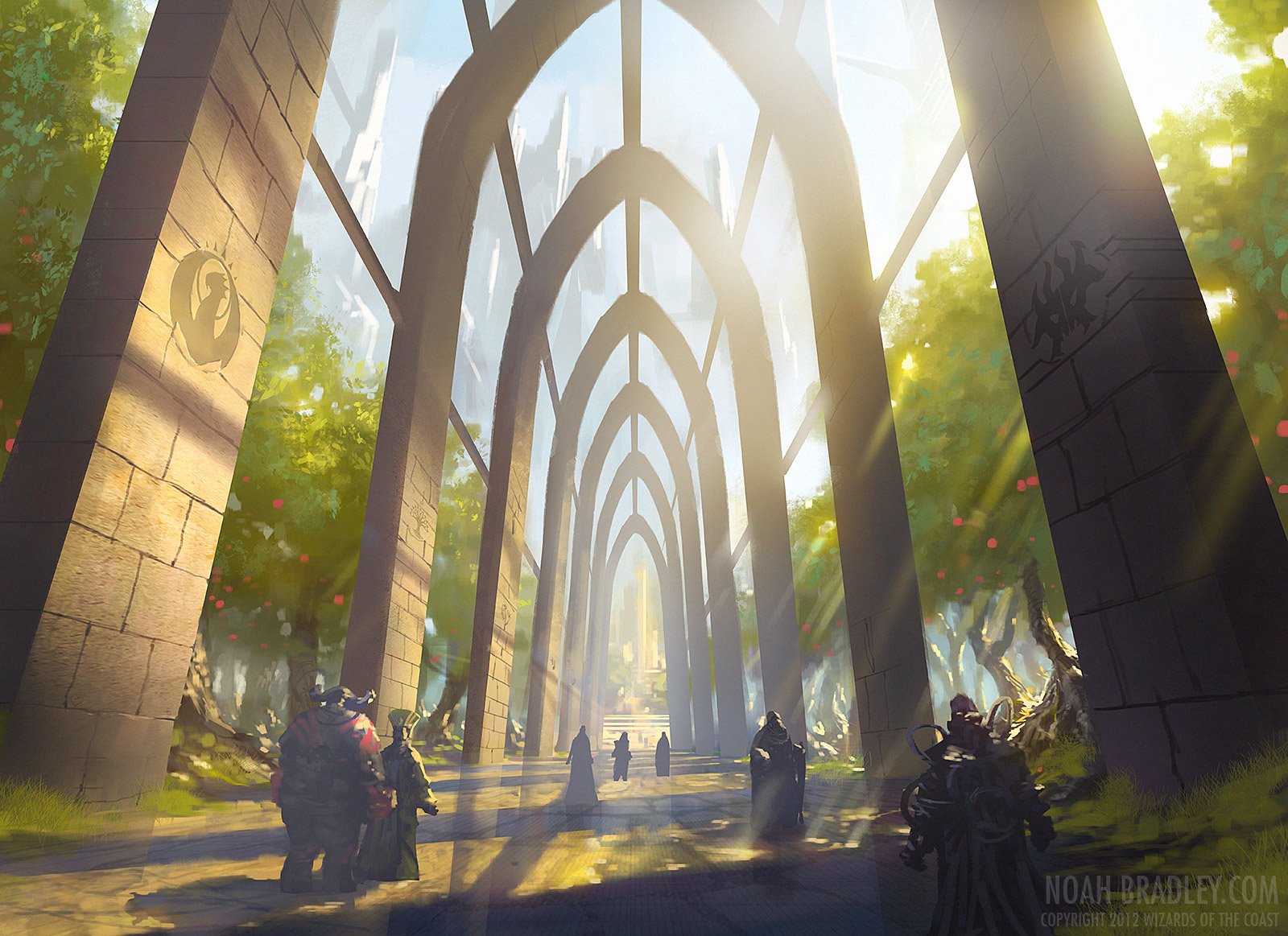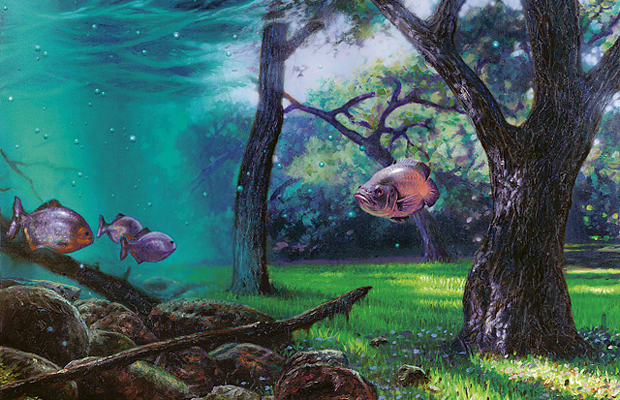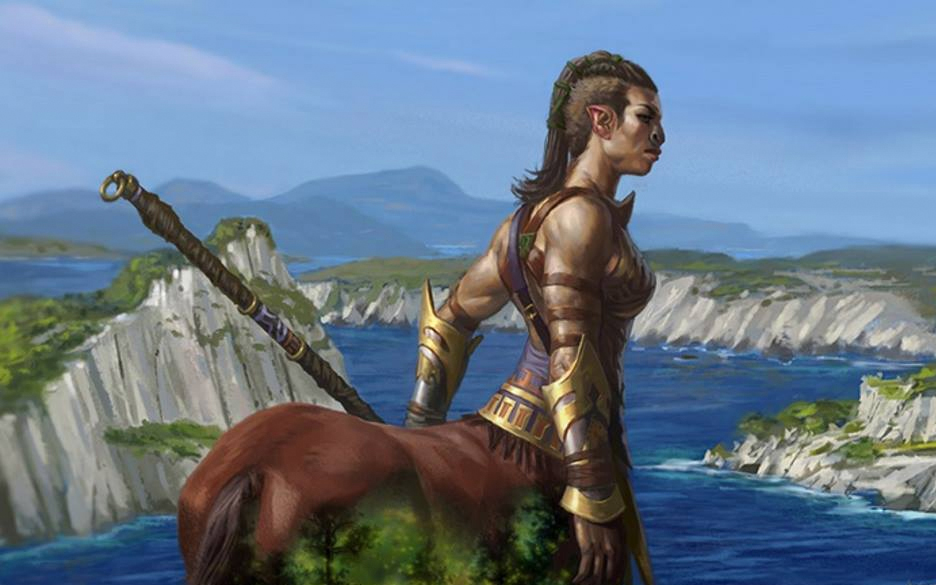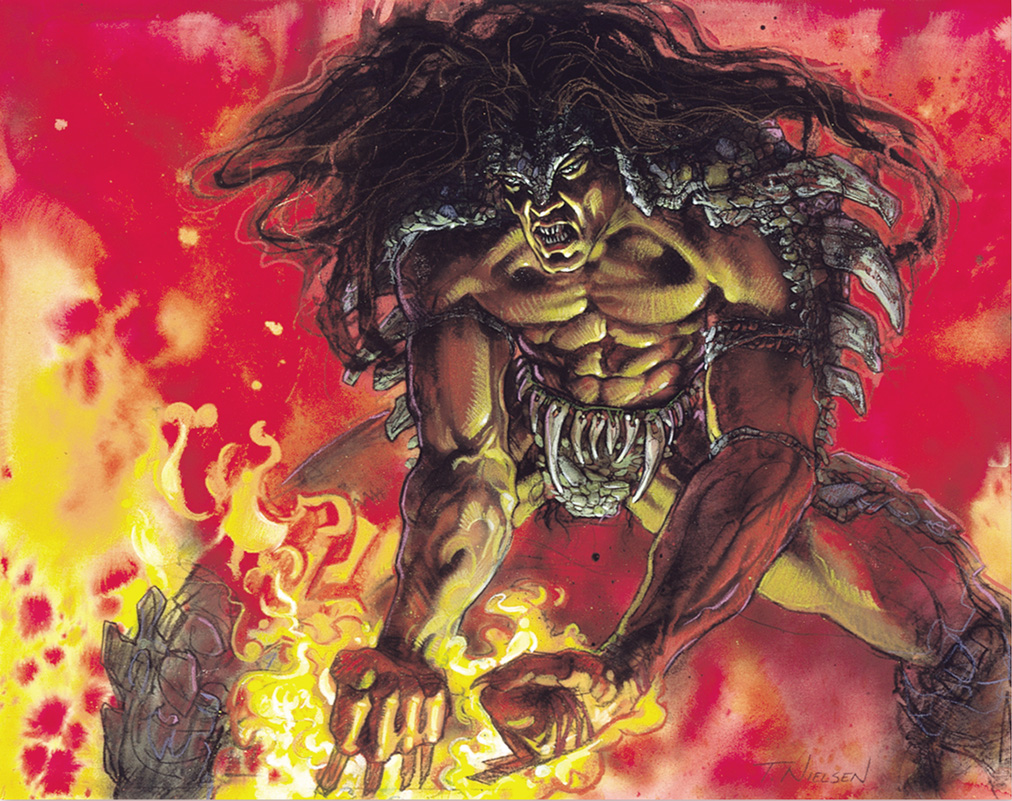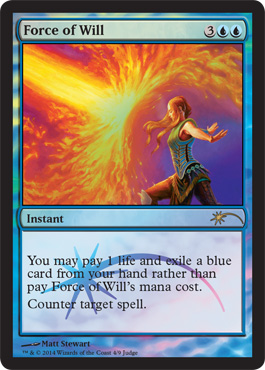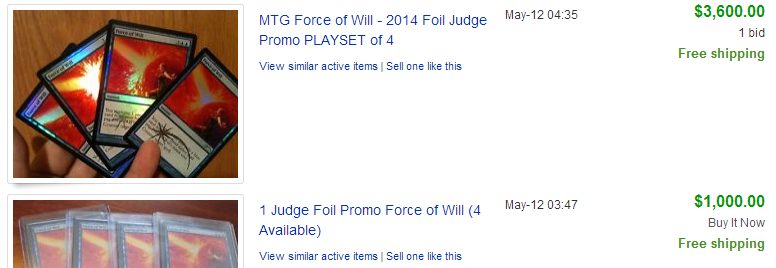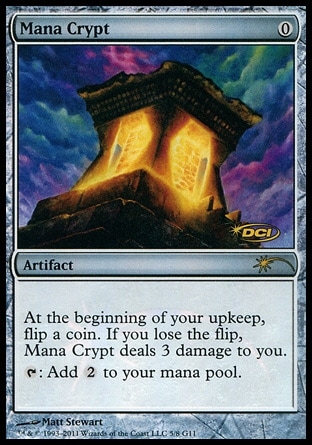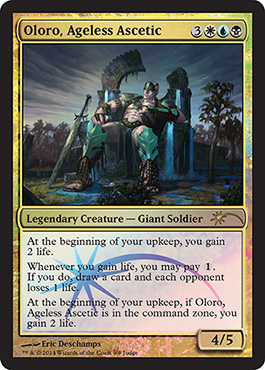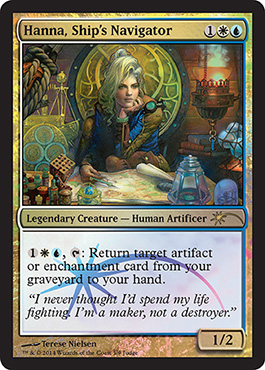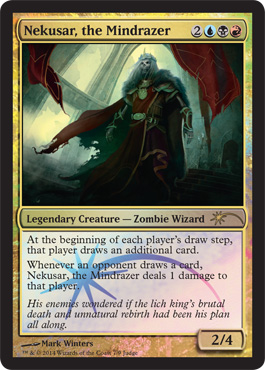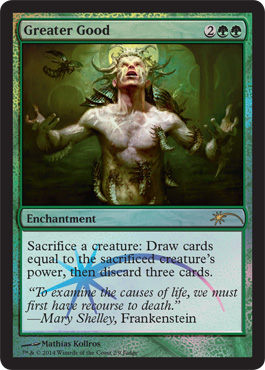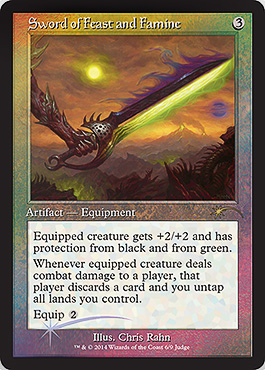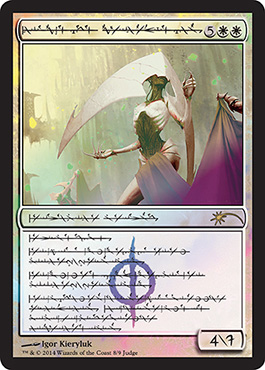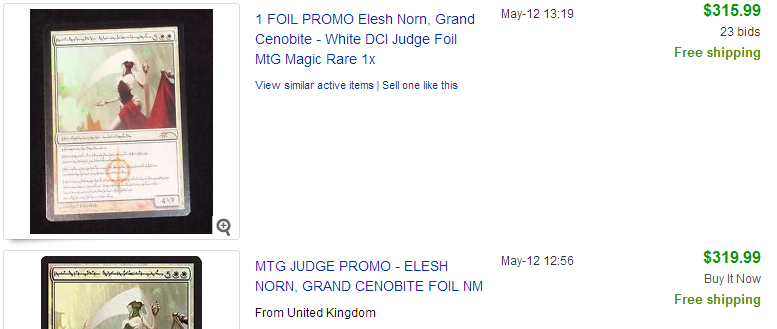By: Travis Allen
@wizardbumpin
Don’t miss this week’s installment of the MTG Fast Finance podcast, an on-topic, no-nonsense tour through the week’s most important changes in the Magic economy. And watch this YouTube channel to keep up to date with Cartel Aristocrats, a fun and informative webcast with several other finance personalities!
My girlfriend just paid her car off in full last month. It’s up towards 80,000 miles and she’s wondering if she should keep driving it for awhile or buy a new one. We were discussing it the other day and she relayed a story of having told a coworker her dilemma. She really likes the Prius and has been considering that car specifically. “He said that I would save the most money by continuing to drive my current car for awhile, but I really like the new Prius. I could keep driving my old boring car, or take on a monthly payment again for a car I really want. I guess it would be kind of a luxury, right? Do you think it’s worth it?”
It’s in between rounds at FNM and you’ve got your binder set out in front of you; a hook with which to fish. A young girl, maybe nine years old stops by. She folds her knees underneath her on the chair as she flips page over page. Her mom is sitting at a table on the edge of a room engaged in a Kindle. The little girl stops at a page of red cards, spotting Utvara Hellkite. Her eyes grow wide. She’s giddy. She’s heard about this dragon but has never actually seen the card in real life. “OH MY GOD you have that cool dragon that makes more dragons! That is soooo coool. Will you please trade it to me?” She thrusts an unsleeved pile of cards at you. Amongst the tattered edges of a motley assortment of boosters you spot a fresh Temple of Enlightenment, setting it down on the edge of your binder. “I just opened that earlier. I don’t like blue or white. Those colors are boring. I like dragons.” She’s visibly excited. “Do you think maybe I could give you the land and some other cards for the Hellkite?”
You’ve been that little girl before. Memories of an age of Magic long lost to you shimmer like a heat wave somewhere in the back of your mind. You have a flashback of peers in third grade in awe of Sengir Vampire. It was terrifying. Only one boy in school had it and he never lost a game where he cast it. Everyone coveted it. The thirst to own Sengir yourself is nearly palpable once again. You envy the girl, in a way. She covets this card with a passion you haven’t experienced in years.
The girl’s mother has wandered over. You introduce yourself and tell her that the young woman across from you would like to trade her card for your card, but that her daughter’s card is worth several dollars more than yours is. The mother looks at her daughter, youthful unbridled excitement plainly visible across her face. “I don’t know Sarah. He says your card is more valuable.” “I don’t care. The dragon is so cool. Greg is going to be amazed I have it. Please let me trade it? It’s so worth it!”
******************************************************************************
What is the value of a scooped game? How much is a round one concession worth at FNM? How much is that same act of concession worth to you in the last round of the final GP of the season where you just need a few more planeswalker points to lock up your second bye for the entire next year? How about a concession in the finals of a PTQ?
******************************************************************************
At a Legacy tournament a few years ago, Alex Bertoncini had registered Manriki-Gusari in his sideboard as tech against other Stoneforge decks. This was during the days of three-round byes at SCG events, so Alex used the time to put together his deck. It was common for players to register decklists they didn’t have all the cards for yet. (This still happens today.) He discovered that not a single vendor on site had a copy of the card available. He began asking players on the floor if they had a copy. He eventually managed to find someone that had the card in his binder. “Great,” Alex said. “It’s in my sideboard for the Legacy open and I’ll get a game loss and lose a sideboard slot without it. What do you want for it?” The player smiled. The card cost maybe $1 on TCG at the time. “Twenty-five dollars.” Alex paid. Was it worth it?
******************************************************************************
I’m known at my local store as a finance guy, and subsequently get asked how much cards cost frequently. “Travis, how much is Courser worth?” I’m never quite sure how to answer this question. Worth is a funny concept. We’re so used to bandying the term around, but what does it really mean? When I’m asked “how much is Tarmogoyf worth now” what am I supposed to draw upon to answer that? Take a look at the price of Tarmogoyf on Starcity and TCGPlayer.
The exact same card, exact same condition, is $200 at SCG and $185 on TCG. The question remains: it worth $200 or $185? Sitting in front of your computer right now, knowing that the card is available for those two prices, what is the right answer? One could argue that SCG’s higher price reflects their customer service, reliability, and all the other intangibles. But does that affect the actual value of the card? If you’re talking about trading for a Tarmogoyf at a local Modern event should SCG’s additional services dictate that you throw another Courser of Kruphix into the pile?
Why does a Modern Masters Tarmogoyf cost over $165 while a Swordwise Centaur is left behind on card tables worldwide without a single thought given to keeping it? They’re the same quality of cardboard. If you manage to wring all the ink out of the cards you’ll find that neither uses appreciably more. The actual physical presence of the cards, disconnected from whatever demand Magic players place on them, is essentially identical. Without people to place different amounts of external demand on the cards they are worth the same. To say a Tarmogoyf is worth $200 while a Swordwise Centaur is worth $.02 means that there is much more to worth than the physical components. This seems obvious enough, but it has implications that we don’t always appreciate.
Take the young girl from the example above. She wants that Hellkite something fierce. The card represents something that many of us find incredibly difficult to experience after so much time invested in the game. Money means little to her. Cards are valued based on how easily they kill the opponent and how many kids in her grade own a copy. Utvara Hellkite is a card spoken of as a legend amongst her peers. She would immediately have the best deck of all her friends were she to acquire the dragon. The Temple of Enlightenment is essentially valueless. She will never use it. It will collect dust, the edges exposed to wear as it is jostled around in shoeboxes and backpacks. Eventually it will be thrown out when she moves on from the game and her father is cleaning out the attic. To her the dragon is easily worth more than the land. The dragon represents all that is exciting about Magic. But the Temple? What does she care? In her eyes the answer is crystal clear: The dragon is worth far more than the land.
The reason why an object’s worth is so difficult to pinpoint is that it is entirely contextual. If you’re just doing some light trading at an FNM, a Scalding Tarn is probably ‘worth’ the $80 MTGPrice says it is. When it’s early Saturday morning fifteen minutes before the PTQ starts and you still need one for your deck, I bet it’s ‘worth’ more than just the $80 to you. You’d trade $85, $90, maybe even $100 or more for it if it’s necessary for your deck. I remember paying $2 apiece on Might of Old Krosa’s at GP Chicago last year when they were $.40 on TCG because even though I was paying five times what I would online, in that moment they were easily worth the markup because without them I couldn’t play Magic.
Value is found in all of this by identifying what worth means to others. Aside from the most veteran traders, most of us have cards in mind that are worth more than their sticker price indicates. It’s a card we really need to finish foiling an EDH deck or it’s the last dual to finish a playset for an in-the-works Legacy deck. Whatever it is, when we find it we’re often willing to give up more than retail because having the card in our possession is worth more than the markup we pay to acquire it.
Worth is more than the dollar value assigned to a card by any given retailer. Worth includes the time, the day, the location, the temporal necessity, the experience, the story. Understanding in what ways worth is transient and nuanced will help you make better trades and purchases.
Humility is $17.11 on MTGPrice right now. Courser of Kruphix is $16.30. Which card is worth more? Which would you rather have in your binder on Friday at 5:45pm?
